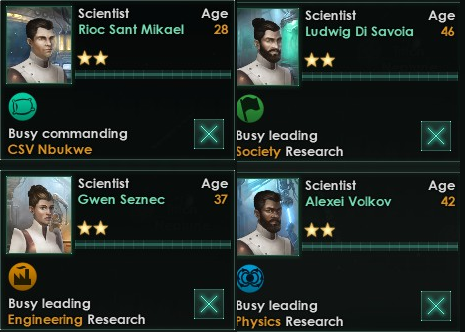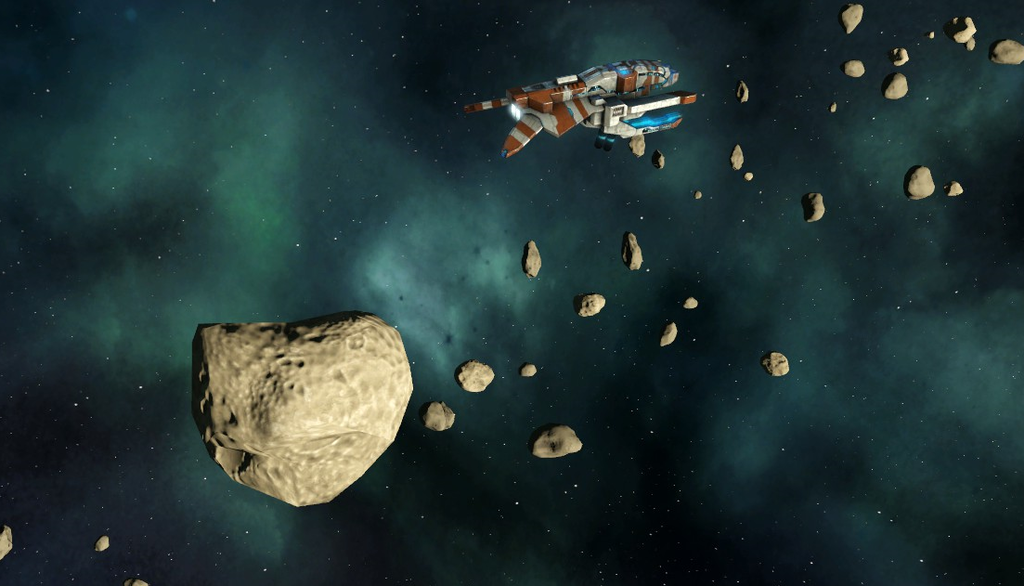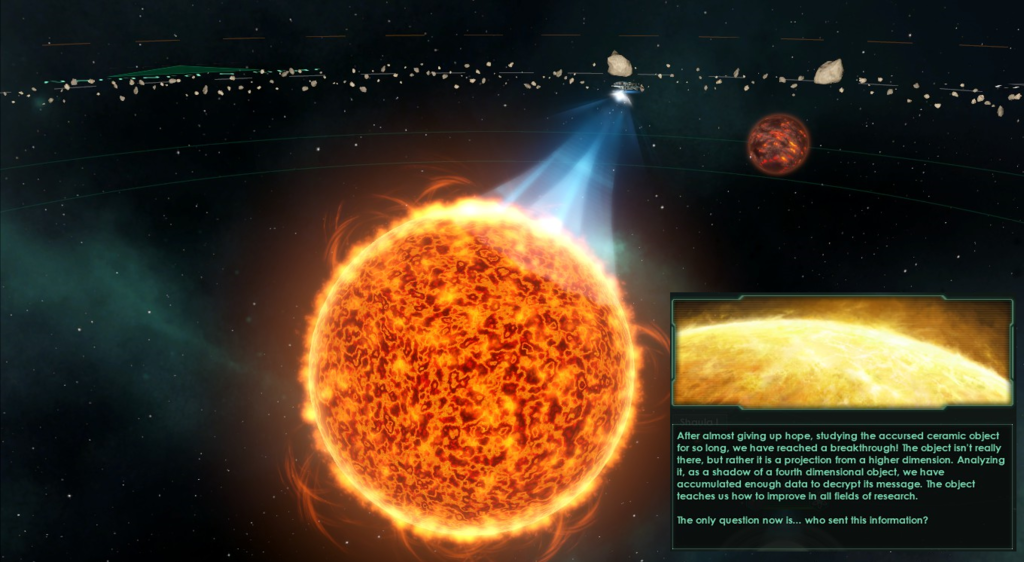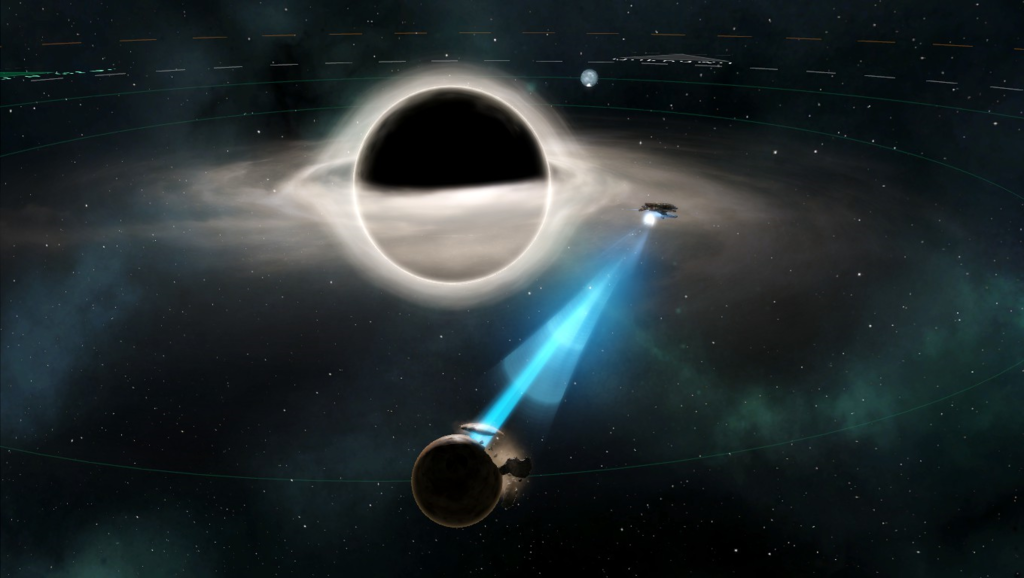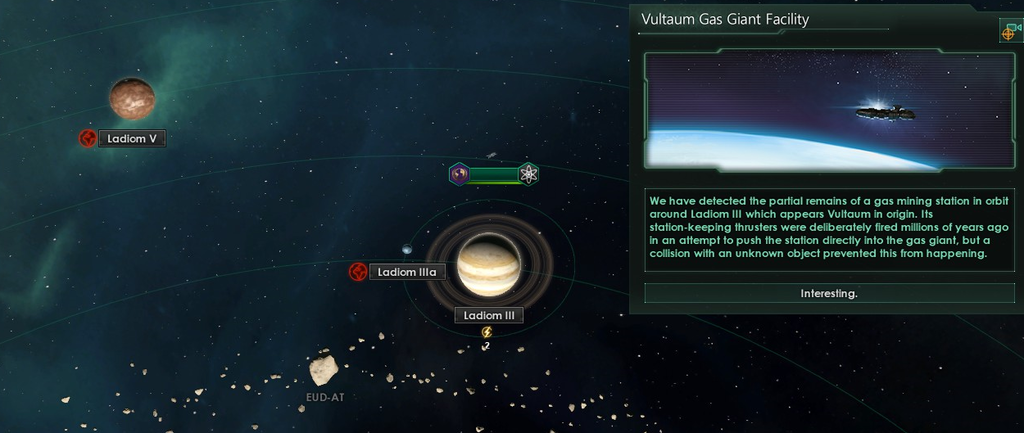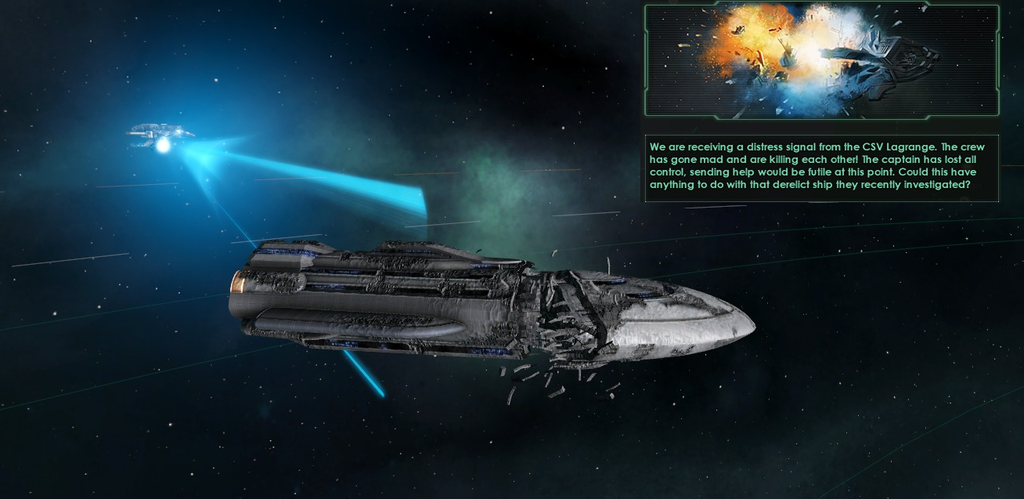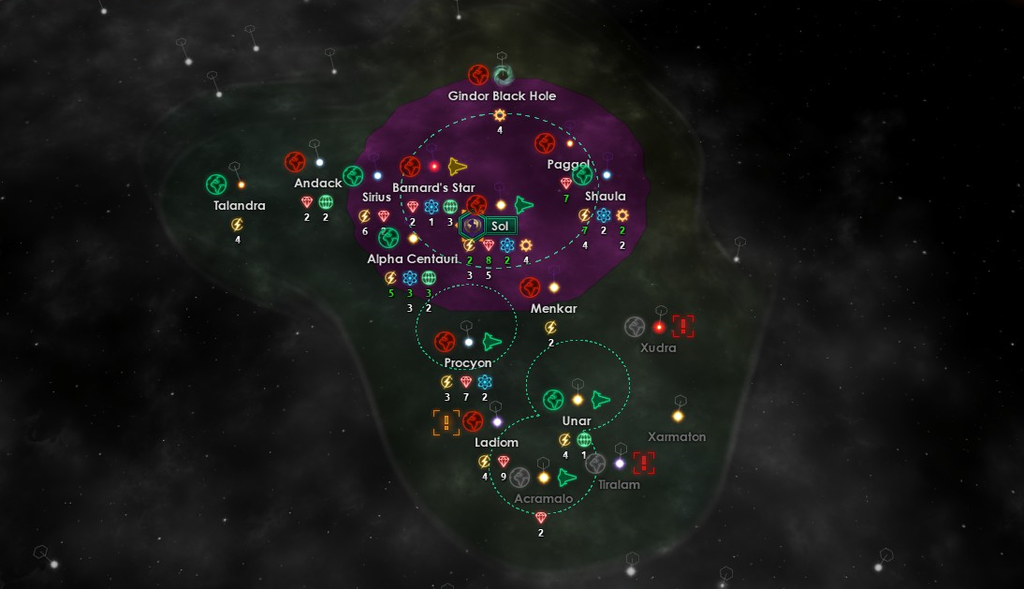The ENC Interstellar Survey Expedition Begins
2200 - 2203 AD: Rioc Sant Mikael Begins Man's Journey into the Stars
The most immediate task in front of the Earth Naval Coalition was the in-depth study of the Sol System and, subsequently, its neighbor Alpha Centauri. To that end, a team of scientific experts was assembled to conduct ongoing research aboard ENC Headquarters, and the CSV Nbukwe was crewed with a team of some of the brightest minds in a variety of scientific fields. Many of the crewmen were researchers from Mali, chosen for the symbolically out of acknowledgement of the first global circumnavigation. Its Captain, however, was a young prodigy from Brittany -- 28-year-old Rioc Sant Mikael. Holding two doctorates -- one from his native Brittany and one from a renowned astrophysics program in the Byzantine Empire -- the cautious young man was deemed to have the right mix of intelligence and prudence to lead the Ndukwe's expedition into the stars.
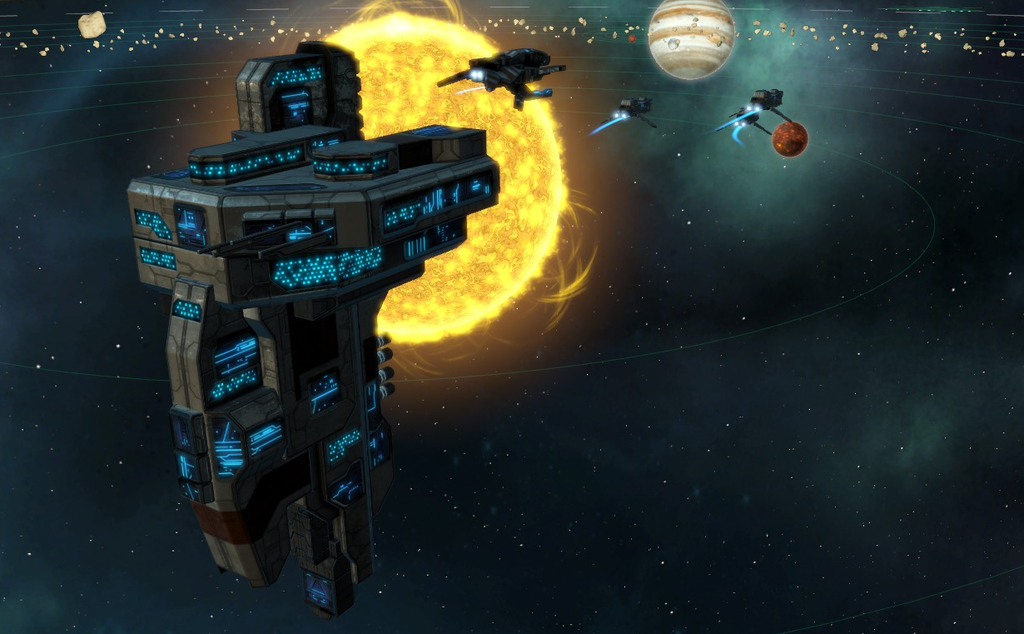
In late January of 2201, President Stavros Nikolaidis declared the ENC Interstellar Survey Expedition officially underway. The CSV Nbukwe left the docks of ENC Headquarters accompanied by its escort corvettes, and Dr. Sant Mikael began the process of conducting orbital surveys on each of Sol's planets, and several of its moons and asteroids. Thanks to the high speed of the Coalition's newest sublight propulsion systems, the project would take approximately 19 months to complete, including minor resupply stops. Dr. Sant Mikael maintained meticulous logs of his findings, spending hours a day recording every detail of his trips in order to avoid leaving out any morsel of information that might prove critical. He also provided daily transmissions of video recordings and data samples back to ENC Headquarters. There, the information was studied in greater depth by a larger team of scientists. More critically, perhaps, the highlights of Dr. Sant Mikael's voyage were broadcast daily across the world on evening news broadcasts, and the people of Earth watched with rapt attention each night, shattering Nielsen ratings.
Some of the surveys proved uneventful -- Mars, for example, was found to be entirely barren. There were no signs of life, much to the disappointment of speculators on Earth, nor were there any seemingly useful research material, resources, or anything besides quicksand, mountains, and barren, empty space. Stargazers and science fiction fans alike were crushed to find that there was, definitely, absolutely nothing there. Likewise, the probes of Luna, Uranus, and Neptune proved unremarkable.
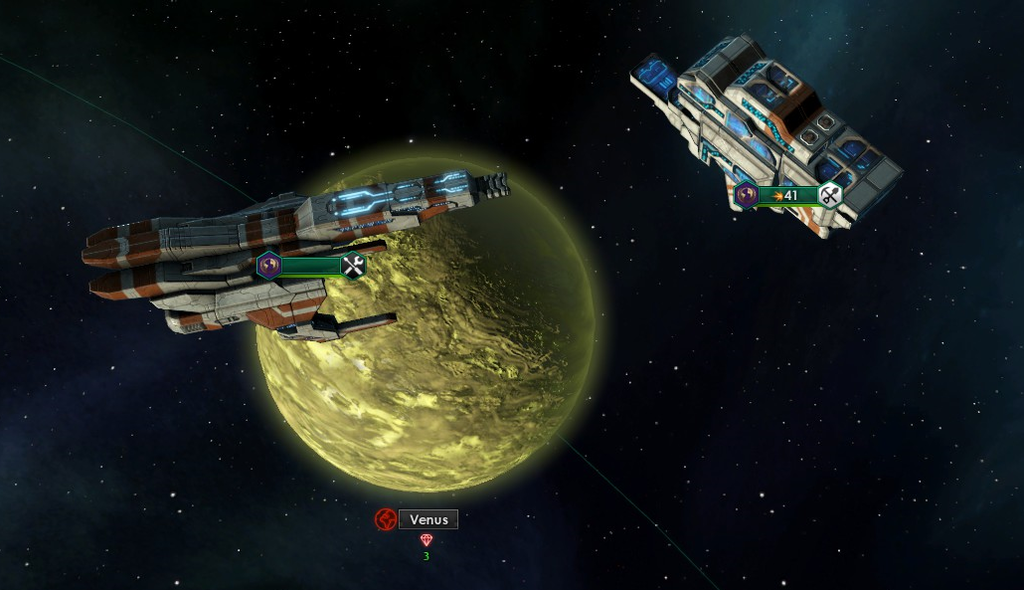
Other surveys proved to be far more intriguing -- and actionable. Venus, the second stop on the Expedition, was found to harbor substantial deposits of minerals and valuable materials useful for construction projects and synthesizing components for ships and equipment. The CIS (Coalition Industrial Ship) Sahara was dispatched there after the Ndukwe's departure, where its crew constructed an orbital extraction station from which to harvest some of these important resources. Similar structures were deployed orbiting Saturn and 2 Pallas, to extract energy and mineral resources respectively. Slowly but surely, the Expedition was uncovering ways to glean valuable manufacturing and economic resources from within the Sol system, gradually building up the ENC's ability to sustain future projects.
But when the initial survey of Sol had been completed, it was time to begin what Dr. Sant Mikael considered the far more fascinating part of his journey: the warp jump into Alpha Centauri.
On November 2, 2201, the CSV Nbukwe dropped warp on the outskirts of the Alpha Centauri system; Dr. Sant Mikael and his crew became the first humans to successfully travel to another star system. The survey of the system took another year or so, and revealed that the Alpha Centauri system was rich in energy resources and was teeming with potential research leads in the fields of physics and societal research. Dr. Sant Mikael took detailed records of the exploitable resources on each planet and moon in the system, sending them to ENC Headquarters so that they could be reviewed for a possible construction expedition to claim the system.
The news of these resources, however, quickly fell from the news when the greatest discovery of the Alpha Centauri Expedition was revealed: habitable worlds.
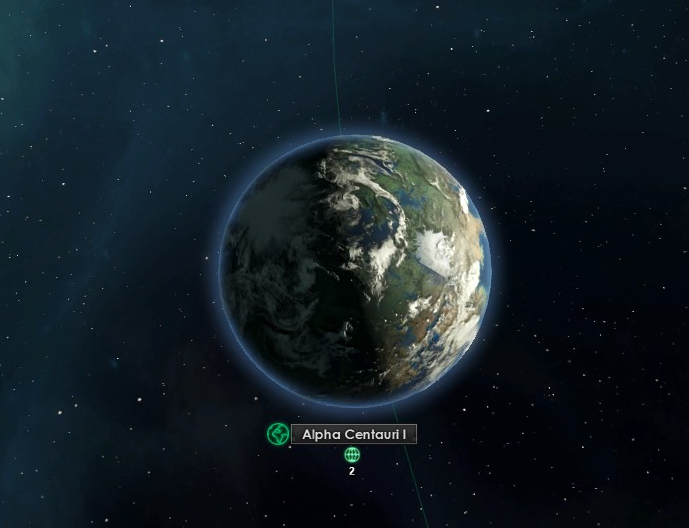
Alpha Centauri I was a planet just slightly larger than Earth, tidally locked around its star so as to create perpetual day on one side and perpetual night on the other. It had a network of continents similar to Earth's, and its atmosphere and conditions proved sustainable for human life. The moon of Alpha Centauri II -- just over twice the size of Luna -- also had similar conditions, meaning that two potentially inhabitable worlds resided within the first system ever explored by Humans. The news hit Earth and started a massive wave of enthusiasm for expanding the ENC's space program. Television pundits and political representatives began to speculate about the creation of a colonization mission, and dinner table conversations across earth began to dream of what it would be like to live on another planet. Dr. Sant Mikael had started a movement.
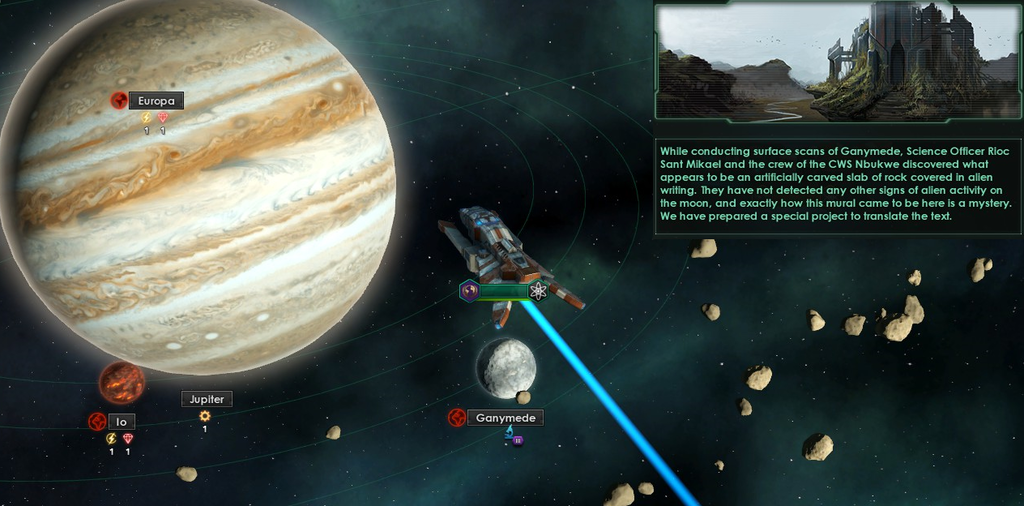
But as soon as Dr. Sant Mikael made the bombshell discovery of habitable planets, he was recalled to finish what he had started at home in Sol. The biggest breakthrough within the Sol system was found around Jupiter -- the planet and each of its moons contained multiple resources, from energy and minerals to valuable research materials that could further the efforts of the scientific teams back home at Earth. Most interestingly, a glistening, refractive object was detected on the surface of Ganymede, prompting a special investigation by Dr. Sant Mikael's team. The object turned out to be some form of stone mural, marked with a handwriting foreign to Earth. While the ENC prepared to deploy a second science vessel to continue to chart the neighboring star systems, Dr. Sant Mikael was recalled from active surveying to lead the project attempting to translate the strange alien document. After artifacts from a 12 million-year-old "Vultaum Star Assembly" were found on Alpha Centauri II, Dr. Sant Mikael hoped that this mural might provide a clue into unlocking the identity of a non-human, spacefaring civilization.

 Glad you found some good ones that are worth using.
Glad you found some good ones that are worth using.

